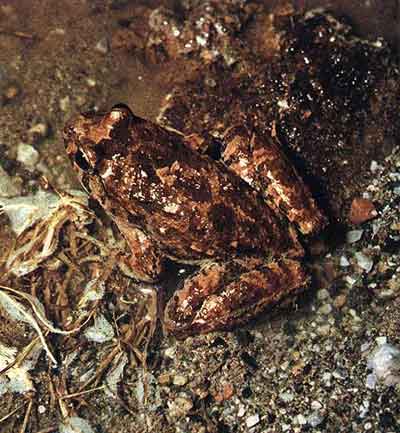|
|
|
|
|
| Home | Classification | The Maltese Islands | Plants | Animals | Keywords | Contact Page |
|
|
| Animals - Amphibians |
|
|

The class Amphibia is divided in three Orders, two of which (Caudata and Anura) are present in Europe. Amphibians are animals with a soft moist skin which have no scales. The skin is permeable to water and therefore most amphibians are limited to humid environments. Amphibians are cold-blooded and so temperature inside the body varies according to the surroundings.
Amphibians have a:
bony skeleton
2 pairs of walking legs, forelimb with 4 digits; hind limb with 5 (pentadactyl)
lungs for respiration (also use gills and skin for respiration)
partially divided heart(3-chambered)
Most amphibians lay their eggs in water. When the larvae, known as tadpoles, hatch, they do not resemble the adults. They spend some time in the water, feeding almost incessantly, and later metamorphose into tiny adults. About 45 European species known.
In Malta we have one Amphibian. It belongs to the Order Anura. This Order includes the frogs, robust amphibians which lack tail. The hind legs are much longer than the forelegs, and this enables many species to leap considerable distances. The mouth and eyes are large.
Painted Frog (Zring) Discoglossus pictus
7cm. The only Maltese amphibian. Colour very variable: olive green, grey, yellow or brown, sometimes reddish, with darker, pale-bordered markings. Pale stripe sometimes present on the back; ventral surface always whitish. Found in localities where fresh water is present, whether flowing or stagnant. Prefers shallow pools in valleys, and water reservoirs, where it rests in the water leaving the head above the surface. In summer it lies concealed in damp places. Lays around 500 eggs in a layer held together by a gelatinous covering, Egg-mass often becomes attached to vegetation, stones or the sides or bottom of the pool. Each egg grows to a diameter of about 4mm before hatching. Young (tadpoles) have a long tail and do not resemble adult. Tadpoles spend 5-8 weeks in the water, breathing through gills. In time, lungs develop, enabling them to breathe air. Hind legs develop before forelegs. Tail shortens and eventually disappears. Diet also changes gradually from vegetable matter to insects and other small animals. Common. This is the only amphibian inhabiting the Maltese Islands.
